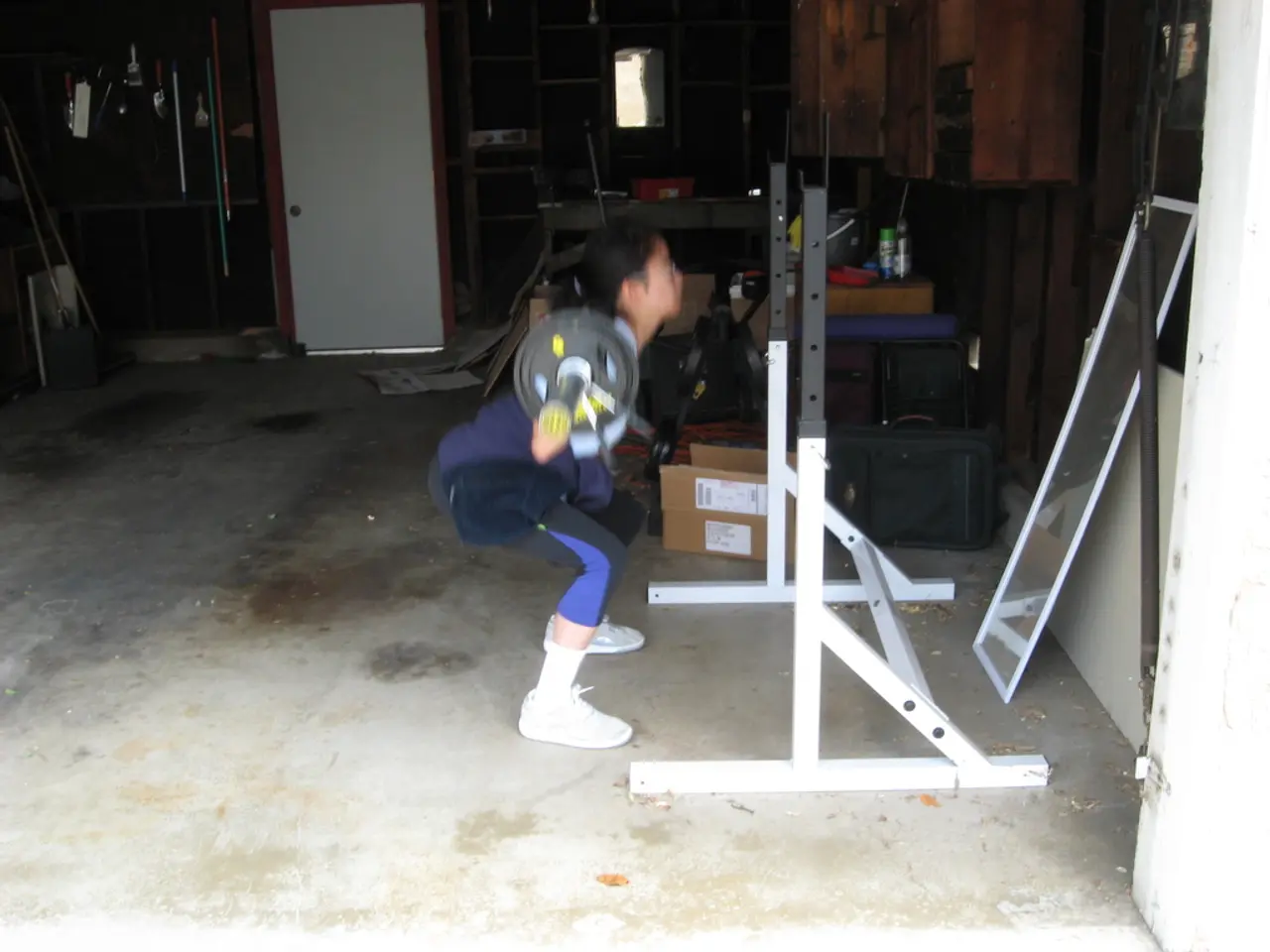Exploring the Extent of Joint Mobility in Physiotherapy Sessions
In the realm of physical therapy, one crucial aspect that is often focused on is the range of motion (ROM) of a joint. ROM refers to the extent to which an individual can move a joint in a particular direction, and it plays a significant role in assessing and improving physical function.
The musculoskeletal system, often referred to as the A-team of body parts, is responsible for movement. This system comprises bones, joints, muscles, tendons, and ligaments, all working together to facilitate various movements.
Bones provide structure, support, and protection, storing important minerals like calcium. Joints, the hinges and meeting points of the body, come in various types like ball-and-socket and hinge joints. They allow for movements such as flexion, extension, rotation, and adduction.
Flexion is the movement that decreases the angle between two bones, bending a joint. Examples include bending your elbow or knee. Extension, on the other hand, is the action of straightening or increasing the angle between two body parts, such as stretching your arm out in front of you to reach for the stars.
Extension is made possible by extensor muscles, located on the back or front of joints, that work in opposition to flexor muscles. Tendons, flexible bands that attach muscles to bones, transmit the force of muscle contractions to enable movement. Ligaments, tough fibrous tissues that bind bones together, ensure stability.
However, certain musculoskeletal disorders can impact ROM, causing joint stiffness, pain, and decreased mobility. These conditions account for frequent ROM impairments encountered in physical therapy practice.
One such disorder is Work-Related Musculoskeletal Disorders (WMSDs), which develop from repetitive motions such as gripping, twisting, and bending. WMSDs often affect the arm and hand and arise from forceful, repetitive tasks with insufficient recovery time.
Chronic Ankle Instability (CAI) is another common disorder. Following ankle sprains, especially lateral ligament injuries, up to 70% of patients may develop persistent symptoms including pain, weakness, recurrent injuries, and notably reduced range of motion.
Scapular Dyskinesia, including Scapular Downward Rotation Syndrome (SDRS), involves muscle imbalances around the scapula (shoulder blade), leading to abnormal scapular positioning that causes pain, muscle stiffness, and limited shoulder ROM, particularly affecting movements like humeral elevation.
Knee joint conditions with altered muscle tone or ligament injury can also impact ROM. Hypertonic muscles or ligament lesions can lead to hypomobility or hypermobility of the tibiofemoral and proximal tibiofibular joints, causing pain and reduced ROM in the knee.
In physical therapy, these disorders are commonly addressed through targeted interventions to reduce pain, improve muscle function, correct joint mechanics, and restore normal range of motion. Maintaining good ROM in our joints is crucial for optimal physical functioning, helping us perform daily activities with ease, prevent injuries, maintain balance, and improve posture.
A summary table of these disorders and their common impacts on ROM is provided below:
| Disorder | Common Impact on ROM | Typical Symptoms/Mechanisms | |-----------------------------------|----------------------------------|-----------------------------------------------------------------| | Work-Related Musculoskeletal Disorders (WMSDs) | Joint stiffness, decreased ROM | Pain, muscle tightness from repetitive strain | | Chronic Ankle Instability (CAI) | Reduced ankle ROM | Pain, weakness, recurrent sprains | | Scapular Dyskinesia (SDRS) | Limited shoulder ROM (e.g., elevation) | Muscle imbalance causing abnormal scapular movement and pain | | Knee ligament/muscle disorders | Knee hypomobility or hypermobility | Ligament injury, hypertonic muscles causing joint dysfunction |
These conditions are common and can significantly impact an individual's quality of life. By understanding these disorders and their impacts on ROM, individuals can take steps towards maintaining good physical health and seeking appropriate treatment when needed.
[1] Kase, C. G., & Kase, S. F. (2014). Dynamic neuromuscular stabilization: a new approach to the treatment of work-related musculoskeletal disorders. Journal of bodywork and movement therapies, 18 Suppl 1, 2-10.
[2] Hewett, T. E., Myer, G. D., Ford, K. R., Heidt, R. S., Colosimo, A. J., Paterno, M. V., ... & Prentice, W. E. (2005). Biomechanical measures of neuromuscular control and valgus loading of the knee in female athletes: a proposed model to reduce anterior cruciate ligament injuries. British Journal of Sports Medicine, 39(4), 279-284.
[3] Cook, G. M., & Dillman, C. M. (2014). Scapular dyskinesis: an evidence-based review of etiology, diagnosis, and treatment. Journal of orthopaedic & sports physical therapy, 44(3), 137-153.
[4] Roos, H. A., & Panjabi, M. M. (1998). The natural history of the internal derangement of the knee: a pathological and biomechanical analysis. The Journal of bone and joint surgery. British volume, 80-B(2), 200-206.
Science plays a significant role in understanding the mechanics of health-and-wellness, particularly in the field of physical therapy. For instance, studies have shown that fitness-and-exercise, such as targeted interventions for Work-Related Musculoskeletal Disorders (WMSDs), can help restore normal range of motion (ROM) in affected joints.




